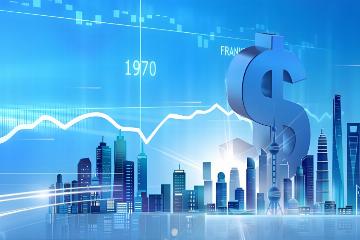Fed to Raise Interest Rates
Advertisements
The dynamics of American monetary policy are undergoing intense scrutiny as the financial landscape shifts in response to a barrage of economic indicatorsIn a recent unexpected pivot, some bond traders have began to speculate that the Federal Reserve may actually opt for an interest rate hike in the coming months, rather than the widely anticipated cuts most investors have come to expectThis sentiment emerged following the release of a robust non-farm payroll report on January 10, showcasing the resilience of the labor market amidst ongoing inflation concerns.
Contrary to the views of Wall Street, which has largely coalesced around the expectation of at least one interest rate cut by the Fed this year, the mood among these tenacious bond traders appears to be a flicker of optimism mixed with skepticism—a viewpoint that seems increasingly tenuousThis emerging bet gained traction after the December Consumer Price Index (CPI) data reinforced the notion of a dovish stance from the Federal Reserve, which subsequently led to a retreat in U.S
Advertisements
Treasury yields from their recent peak levelsYet, the notion of rising interest rates remains palpable among a faction of traders.
Data from a recent financial analysis indicated a notable 25% possibility that the Fed could raise interest rates by the end of the year, based on options market signals closely linked to the secured overnight financing rateNotably, this figure stood at about 30% before the release of the December CPIJust over a week ago, the market's expectations diverged significantly; there was scant consideration for any potential interest rate hikes among the majority of traders, with a staggering 60% betting on further rate cuts to foster economic growthIn contrast, the remaining 40% felt that the Fed might pause its easing, choosing instead to observe the unfolding economic landscape.
This wavering sentiment is indicative of a broader trend observed in the financial markets—one that illustrates how traders are taking bold stances based on their interpretations of the new government's impending policy shifts
Advertisements
Market players are leaning heavily on the belief that fresh tariffs and various related reforms proposed by the new administration could upset the current economic equilibrium, triggering a resurgence of inflationShould inflationary pressures exceed expectations, the Fed could face compelling pressures to reassess its current policy direction, leading to a drastic pivot, much to the discomfort of financial markets.
Phil Suttle, a former economist at the New York Fed, predicts that the Federal Reserve may push for a rate hike as soon as SeptemberHis analysis points toward rising tariffs and restrictive immigration policies as catalysts that could contribute to increased inflationHigher tariffs tend to inflate the costs of imported goods directly, while the reduction in labor supply due to immigration restrictions forces companies to elevate wages to secure sufficient staff, thereby passing on those costs to consumers
Advertisements
Notably, wage levels in the U.Sare seemingly on the rise again—a concerning signal for the Fed.
It is perplexing to observe how the dichotomy between opinion and expectation has evolved within such a short timeframeWhile Suttle's predictions are undeniably aggressive, bond traders have adjusted their expectations to incorporate a potential 25 basis point cut in interest rates this year, with a rising belief of up to 50% for a second cutHowever, Roger Hallam, the global rates head at Vanguard, cautioned that significant unexpected inflation spikes in the months ahead could shift the narrative towards contemplating interest rate hikes this year.
The Federal Reserve's Chairman, Jerome Powell, has consistently reiterated the central bank's reluctance to see inflation exceed its target rate of 2%. When previously confronted about the possibility of interest rate hikes in 2025, Powell starkly noted, "You cannot rule out anything in this world entirely." Nevertheless, he foreshadowed that an increase did not seem to be an imminent outcome, underscoring the challenges mounted by inflation.
Historically, the Federal Reserve has demonstrated its ability to make swift policy changes in response to evolving economic conditions
- Why Is the US Market Bullish Amid Slower Profit Growth?
- Eurozone May Continue Rate Cuts
- Fed to Raise Interest Rates
- Can Mebon's Rally Continue?
- The Definitive Guide to Value Investing
In the midst of the 1998 financial crisis, stemming from Russia's debt default and the near-collapse of hedge fund Long-Term Capital Management, the Fed rapidly reduced interest rates three timesThis quick action preceded a tightening phase commencing in June 1999 aimed at suppressing inflationary pressures.
Tim Magnusson, Chief Investment Officer at Garda Capital Partners, remarked, "What the market truly seeks is a genuine increase in inflation rates—perhaps a situation where the overall CPI ascends toward approximately 3%—to effectively price in the possibility of rate hikes." He believes that the Fed is comfortably in a waiting mode for the time being, eyeing how the economic theoretical landscape evolves.
In the broader analysis of financial instruments, Benson Durham, Global Head of Asset Allocation at Piper Sandler and a former Fed economist, commented that current pricing indicators in the money markets reflect a near 10% possibility of at least one rate hike this year

Leave a Reply
Your email address will not be published. Required fields are marked *